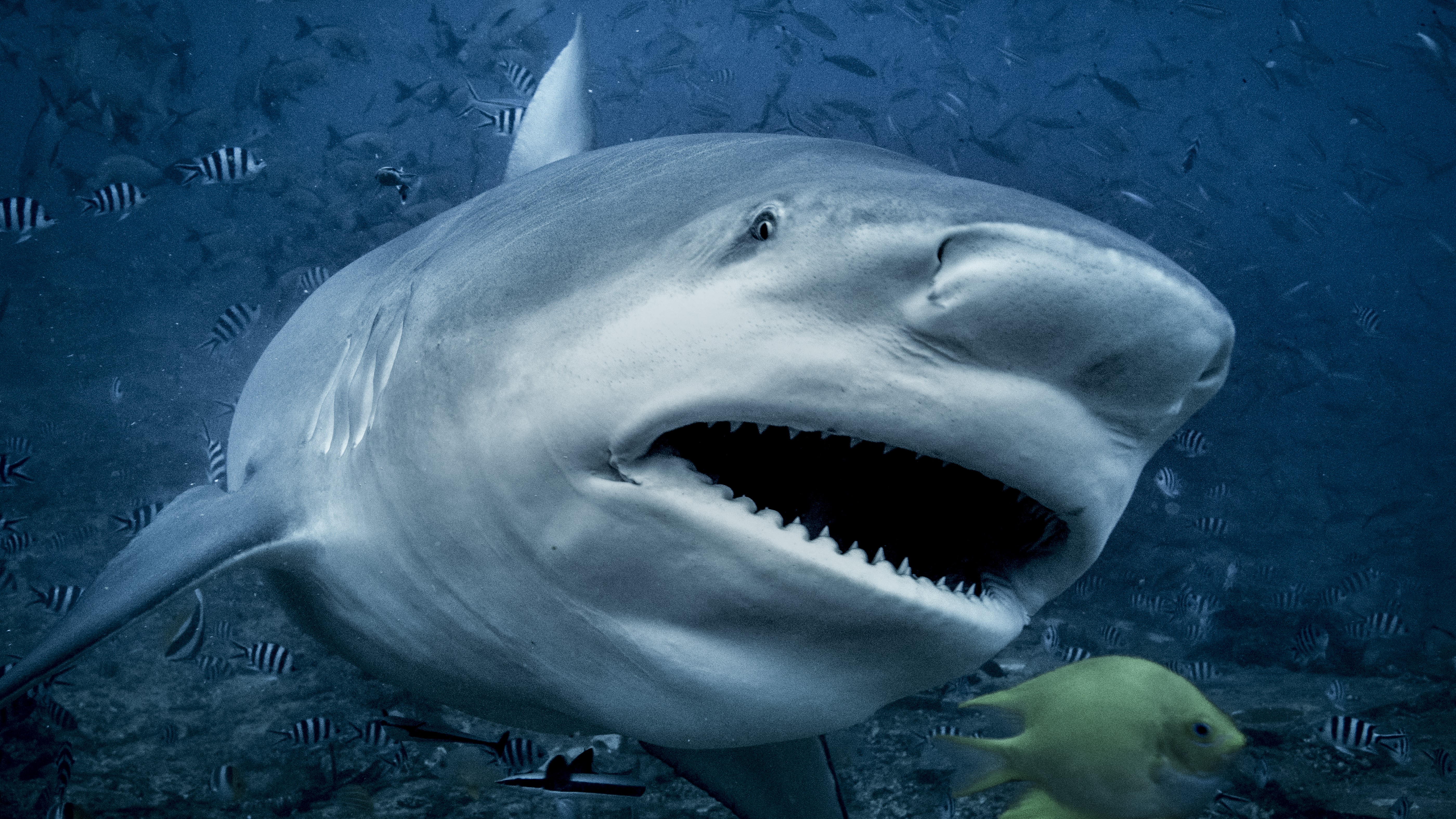Scientists have figured out when the biggest bull sharks are most active — and it's not when official advice suggests
Researchers tracked more than 200 bull sharks off the coast of New South Wales to find out exactly when they were most active and posed the greatest risk to humans.

Scientists in Australia have called for swimming advice to be updated to reflect new information about one of the most dangerous shark species. The call came after researchers tracked the movements of bull sharks off the coast of New South Wales and found the times when the largest individuals are most active.
Currently, advice states that swimming and surfing should be avoided at "dawn" and "dusk" as this is when visibility is poorest and when sharks are more active — both factors that increase the risk of attacks.
However, researchers from the New South Wales Department of Primary Industries and Macquarie University argue swimmers should avoid the water during the afternoon and low-light conditions as well.
Amy Smoothey, scientific officer and shark biologist at the New South Wales Department of Primary Industries, and one of the lead investigators in the study published in the journal Biology on Aug. 31, said the team tracked 233 tagged bull sharks (Carcharhinus leucas) along 21 coastal beaches in New South Wales between 2017 and 2023 to find out when they are closest to shorelines.
Related: Great white sharks have almost no interest in eating humans, study confirms
"We found that the presence of large bull sharks was greatest from midday through to 4 a.m.," she told Live Science in an email, adding there was an increased probability of the sharks being near the shore between 6 p.m. and 1 a.m.
The researchers found there are certain conditions that increase the chances of encountering a large bull shark. These include when the water temperature is higher than 68 degrees Fahrenheit (20 degrees Celsius), after heavy rain or when the water is murky.
Sign up for the Live Science daily newsletter now
Get the world’s most fascinating discoveries delivered straight to your inbox.
"These conditions are favourable for ambush predators like bull sharks," Smoothey said. "Be aware during periods of low-light levels, as these are times when bull sharks are typically more active and you may not be able to see the approaching shark."
Bull sharks are one of the three species involved in most fatal attacks in Australia, along with great white sharks (Carcharodon carcharias) and tiger sharks (Galeocerdo cuvier). Bull sharks, which can grow to around 11 feet (3.4 meters) long, are generally considered to be particularly dangerous as they have a preference for warm coastal waters and can travel up rivers. The most recent fatal attack by a bull shark in Australia occurred in February this year, when 16-year-old Stella Berry was attacked in a river in Perth.
However, the researchers highlighted that unprovoked shark bites are rare. According to the University of Florida's International Shark Attack File, there were a total of 57 unprovoked bites by all species of sharks globally in 2022, most of which occurred in the United States and Australia. Of these, five attacks were fatal.
Smoothey said that the researchers recommend an update to advice about shark safety, but that current guidelines are still important. "We concur with the current shark smart advice that nocturnal swimming and surfing, especially in warm waters and when water visibility is poor, should be avoided for many reasons, not the least of which being the presence of bull sharks," she said.
Editor's note: The original image on this article was of a sand tiger shark (Carcharias taurus). The image has been updated with to show a bull shark.

Lydia Smith is a health and science journalist who works for U.K. and U.S. publications. She is studying for an MSc in psychology at the University of Glasgow and has an MA in English literature from King's College London.










